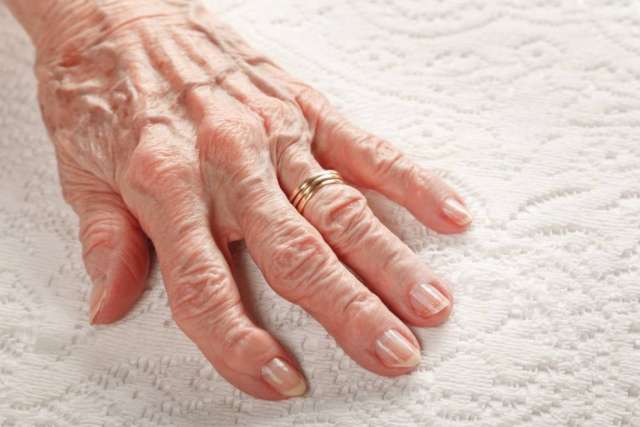Dear Doctors: Why does our skin get thinner and more fragile as we age? My mom is 67, and it’s happening to her. She reached for something between the couch cushions, and the pressure tore her skin. She also bruises more easily than before. How can you protect aging skin?
Dear Reader: Skin is the largest organ of the body. It provides us with a constant stream of sensory data and protects us from potential dangers in the external world. These include biological threats such as bacteria and fungi, chemical toxins and damage from the sun’s ultraviolet rays. Skin is our first defense against harm arising from physical contact. It also helps manage fluid and electrolyte balance, and it is crucial to the regulation of body temperature.
And, as happens with the rest of the body, our skin changes as we grow older. This is known as dermatoporosis, and it involves each of the skin’s three distinct layers. The topmost layer, which is the one we see, is the epidermis. It contains skin cells, proteins and the pigments that give our skin its color. The middle layer, which contains nerves, blood vessels, oil glands and hair follicles, is the dermis. And the innermost layer, which is made up of fat and tissue and contains sweat glands, is the hypodermis.
As we age, the skin cells of the epidermis grow thinner. The proportion of cells that contain pigment, known as melanocytes, also grows smaller. This leads to the pale and translucent appearance of aging skin. At the same time, the blood vessels in the dermis become more fragile. They are easily damaged, which leads to easy bruising. A gradual loss of fat in the hypodermis, also known as the subcutaneous layer, leaves the skin vulnerable to injury. Meanwhile, the oil glands in the skin, known as sebaceous glands, become less productive. This, along with age-related changes to connective tissues, leaves skin less supple and more prone to becoming dry and itchy.

Each person’s skin ages differently, with sun exposure, genetics and behaviors such as smoking or drinking alcohol playing a role. Medications, such as topical steroids, can also contribute to thinning skin. Thin skin isn’t a medical issue in and of itself. But as you’ve observed with your mother, it is easily bruised or damaged. Thinning skin can lead to bleeding and can cause complications in healing. Because skin repairs itself more slowly as we age, wounds in older adults can take significantly longer to heal.
Unfortunately, there is no way to reverse thinning skin. However, there are steps that your mother can take to protect it. It sounds obvious, but using sunscreen, avoiding peak sun and wearing protective clothing are all important. So is a balanced diet and drinking enough water. Moisturizers, which coat the skin with a protective barrier, can be helpful. Some are formulated specifically for aging skin. There is also evidence that retinol creams may slow down the process of thinning. However, these are not appropriate for all skin types and can increase sensitivity to sunlight. Older adults should check with their health care provider before using these products.
At UCLA Health, our dermatologists and dermatology surgeons provide advanced care in a compassionate environment.
(Send your questions to askthedoctors@mednet.ucla.edu, or write: Ask the Doctors, c/o UCLA Health Sciences Media Relations, 10960 Wilshire Blvd., Suite 1955, Los Angeles, CA, 90024. Owing to the volume of mail, personal replies cannot be provided.)





